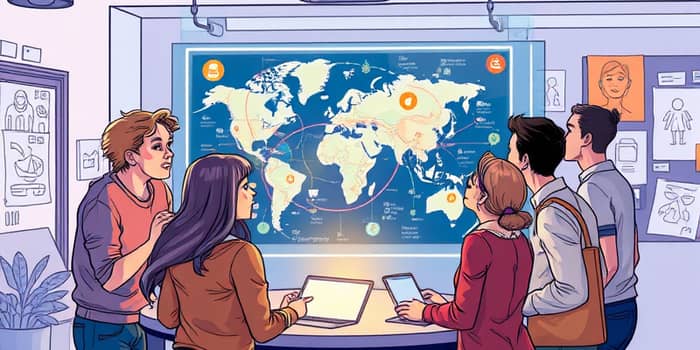Imagine launching a groundbreaking product into the market, only to hear silence. Your features are powerful, your design is sleek, but sales stagnate. The missing ingredient isn’t a technical flaw—it’s a human connection. Without truly understanding your audience, even the most ingenious solution can feel like a message in a bottle.
Customer persona mapping transforms that uncertainty into clarity. By crafting detailed, empathetic profiles of your ideal users, you build products that resonate on a personal level. This isn’t just marketing jargon—it’s a strategic blueprint for deep emotional connection with users, turning your product into its own best salesperson.
Definition and Overview
Customer persona mapping is a structured process of creating detailed profiles that represent segments of your target audience. These personas go beyond surface-level demographics to reveal users’ true needs, pain points, motivations, and goals. By distilling complex data into relatable archetypes, teams gain a crystal-clear understanding of customer motivations.
Rather than guessing what features your users want, persona mapping anchors every decision in real-world insights. When you know who you’re designing for—down to their daily routines and emotional triggers—you can craft experiences that feel seamless and intuitive product experiences rather than forced or generic.
Key Components of Effective Persona Mapping
Building robust personas requires weaving together multiple dimensions of customer understanding. Each component plays a critical role in painting a holistic picture of your users:
By combining these elements, you gain data-driven insights into user behavior, ensuring every feature and message addresses genuine user needs rather than hypothetical scenarios.
The Persona Mapping Process
Creating impactful personas is an iterative journey that blends research with creative storytelling. Here’s a streamlined process to guide your team:
- Research Your Customers: Conduct surveys, interviews, and analytics reviews.
- Group Information: Identify patterns and common traits among users.
- Create Detailed Profiles: Develop persona documents with narratives and visuals.
- Map the Customer Journey: Chart interactions from discovery to advocacy.
- Validate and Refine: Continuously update personas with fresh data.
Each step enriches your personas and ensures they evolve alongside your market. Regular validation keeps your team aligned on real user expectations, preventing stale assumptions from creeping into product decisions.
Real-World Applications
Companies across industries harness persona mapping to drive growth and innovation. Two compelling examples illustrate its power:
- Productivity App Onboarding: New users felt overwhelmed by setup, while power users found onboarding too basic. A dual-path flow was designed to cater to both groups, boosting engagement by 40%.
- Targeted Marketing Campaigns: Segmenting personas by pain points allowed a software firm to tailor email sequences, resulting in a 25% increase in trial-to-paid conversions.
These applications demonstrate how tailored solutions that resonate deeply can transform both user experience and business metrics, making your product the obvious choice.
Best Practices for Effective Persona Mapping
To maximize the impact of your personas, adopt these proven guidelines:
- Base personas on robust research, not gut feelings.
- Prioritize user privacy by making sensitive data optional.
- Regularly revisit and update personas as market needs change.
- Share personas across all teams to foster cross-functional alignment.
- Use personas to inform both design decisions and marketing strategies.
When everyone—from developers to executives—understands the same user stories, collaboration becomes more focused and outcomes more impactful.
Conclusion
Customer persona mapping is far more than a marketing buzzword. It’s a strategic discipline that infuses every stage of product development with genuine user empathy. By committing to detailed, data-driven personas, you unlock the ability to design products that create an innate desire to engage and build lasting loyalty.
Start your persona mapping journey today: immerse yourself in user research, craft compelling archetypes, and let your product speak directly to the hearts of those you serve. When your designs are rooted in real human stories, selling becomes effortless—and your users become your greatest advocates.
References
- https://www.uxtweak.com/user-personas/persona-mapping/
- https://www.growthloop.com/university/article/customer-persona
- https://solidwp.com/blog/persona-mapping/
- https://socialb.co.uk/blog/persona-mapping-audience-segmentation/
- https://maze.co/guides/user-personas/persona-mapping/
- https://heymarvin.com/resources/persona-mapping/
- https://blog.hubspot.com/marketing/buyer-persona-research
- https://trymata.com/blog/what-is-persona-mapping/










